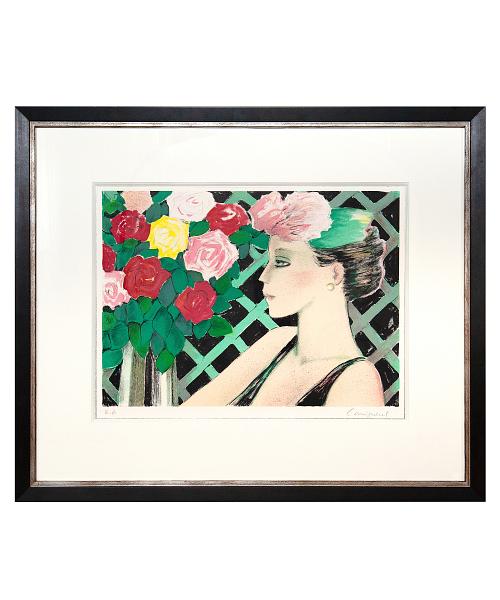Jean-Pierre Cassigneul 'Profil aux roses'
Shipping
We don't declare under-value and as 'gift' for customs.
Custom duties and VAT in your own country may apply and the seller cannot be held responsible for additional costs. Please check with your country’s customs office to determine what these additional costs will be prior to bidding/buying.
Returns
If the customer decides to cancel / withdraw he will bear the risk, cost of all shipping and return import duties of the seller. The item will be packed very well and will be shipped insured. Money will be returned on arrival of the parcel, after been checked.
- Lithograph in colours on paper
- Signed lower right in pencil
- Annotated EA (épreuve d’ artiste) lower left in pencil
- Framed with highest quality of museum glass
- Reference
- 999-85
- Designer
- Jean-Pierre Cassigneul
- Status
- Available
- Price
- Price on request
- Year
- 2005
- Origin
- Private collection
- Dimensions
- 38 x 52 cm
Jean-Pierre Cassigneul
"I began painting my first portraits of women in 1963, along with gardens, the Bois de
Boulogne, and Deauville. My world hasn’t changed since then. "
His practice has expanded from painting into lithography, tapestries, and stained glass over a five-decade career which has seen him celebrated across Europe, Japan, and America. At 85, Cassigneul delights in his position as the “unclassifiable painter”, uninfluenced by art movements, devoting himself to figurative painting throughout his long career. He is perhaps best known for his striking compositions of fashionable women, with his ability to capture the transience and beauty of recreation best displayed in these languid works.
Raised between France and Switzerland, Jean-Pierre Cassigneul studied at the Académie Charpentier in 1954 where he was taught by the influential French figurative painter Jean Souverbie (1891-1981). Souverbie had been closely associated
with Post-Impressionists, Maurice Denis (1870-1943), Paul Sérusier (1864-1927), Édouard Vuillard (1868-1940) and Félix Vallotton (1865-1925) at the Académie Renon.
It was under the influence of Souverbie that Cassigneul founded his technique and approach to painting. Cassigneul can spend several months on a single canvas, though his working environment is not the solitary atmosphere one might expect, he is keen on presenting his studio as a communal space, where one can ‘chat, laugh, and discuss things, and paint at the same time.’
He is by no means a contemporary artist in the strict sense of the term. His classical training at the Beaux-Arts and his inspiration from the movements of the late nineteenth and early twentieth centuries make him almost suspect. There is no conceptual art, no excessive marketing, no excess in Hirst's style: we simply imagine the painter with his brush in his hand in his studio. He borrows his palette from the Fauves, his flatness from the Nabis and all his sensitivity to transform ordinary scenes of emptiness. No morbidity, no grand spectacle other than that of everyday bourgeois life.
Cassigneul is neither a man of all fashions, nor a man of all women. He celebrates only one: the elegant woman. A secret Parisian woman with a delicate skin, whom he spotted wearing a hat on the pavements of Avenue Foch or near the Longchamp racecourse. He often caught her on a walk in the woods, the stuff of romance and the social theatre par excellence until the Belle Epoque. Unless he caught her on her balcony or on holiday in Normandy, gazing into the distance. More coquette than cocotte, she seemed unapproachable and imperturbable, dreamy and melancholy all at once. With her oblong, almost slanted eyes and geisha make-up, it's easy to understand the Japanese craze for this artist, who subtly disorientates his model. And the flowers firmly compete with the elegant ladies for their beauty and colour.
